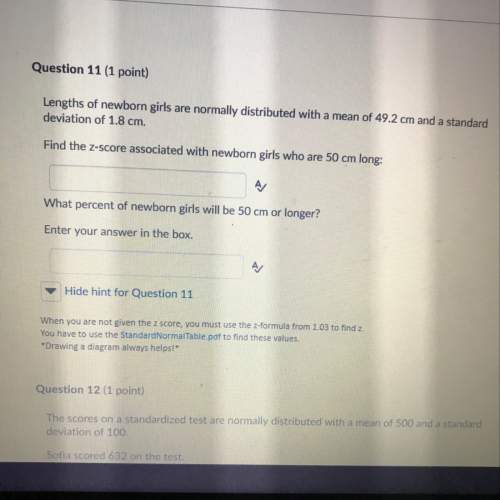
Mathematics, 13.10.2020 04:01 talia43
You wake up with a feeling of total bliss and an irresistible desire to read about cognitive science. You go to the health center where Doctor A and Doctor B consider the possibility of cogncitis, a brain condition due to a virus. Doctor A gives this hypothesis a prior probability of 070thus 30 probability for NOT cogscitin whie Doctor B gives it a prior probability of 0.20 (thus 0.80 probability for NOT cogscitin. They order three tests and the results come back sequenitially test 1 first, test 2 second, and test 3 third. They engage in Bayesian updating after seeing the results of each best Test 1comes back first and it is positive. Here are the likelihoods for the positive result for Test 1 cogscitis0.70 not cogscitis 0.10 Using Bayes' rule, calculate the posterior probabilities arrived at by each doctor for the hypothesis that you DO have cogscitis. After Test 1, what is Doctor A's posterior probability for the hypothesis that you DO have cogscitis? After Test 1, what is Doctor B's posterior probability for the hypothesis that you DO have cogscitis? Test 2 comes back next and it is positive. Here are the ikelihoods for the positive resulit for Test 2 cogscitis 0.60 not cogscitis 0.20 Using Bayes rule, update the posterior probabilities arrived at by each doctor for the hypothesis that you DO have cogscitis. Hint: Use your posterior probability after seeing the results of Test 1 as the prior probability before seeing the results of Test 2. After Test 2, what is Doctor A's posterior probability for the hypothesis that you DO have cogscitis? After Test 2, what is Doctor B's posterior probability for the hypothesis that you DO have cogscitis? Test 3 comes back next and it is positive. Here are the likelihoods for the positive resulit for Test 3: cogscitis 0.90 not cogscitiso.10 Using Bayes' rule, update the posterior probabilitis arrived at by each doctor for the hypothesis that you DO have cogscitis. Hint: Use your posterior probability after seeing the results of Test 2 as the prior probability before seeing the results of Test 3. After Test 3, what is Doctor A's posterior probability for the hypothesis that you DO have cogscitis? After Test 3, what is Doctor B's posterior probability for the hypothesis that you DO have cogscitis?

Answers: 3


Other questions on the subject: Mathematics

Mathematics, 21.06.2019 17:30, iliketurtures
In parallelogram abcd the ratio of ab to bcis 5: 3. if the perimeter of abcd is 32 find ab
Answers: 1



Mathematics, 21.06.2019 22:30, raquelqueengucci25
What is the distance from zero if a quadratic function has a line of symmetry at x=-3 and a zero at 4
Answers: 1
You know the right answer?
You wake up with a feeling of total bliss and an irresistible desire to read about cognitive science...
Questions in other subjects:

Mathematics, 18.10.2021 03:10



Mathematics, 18.10.2021 03:10

Biology, 18.10.2021 03:10








